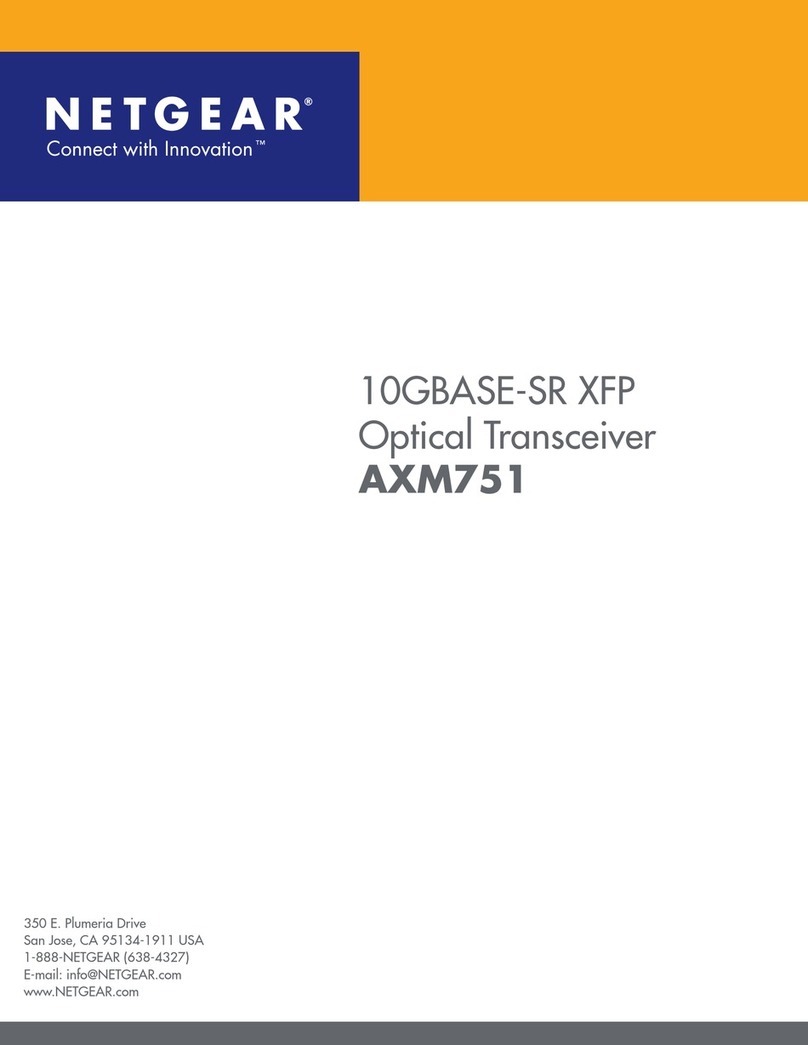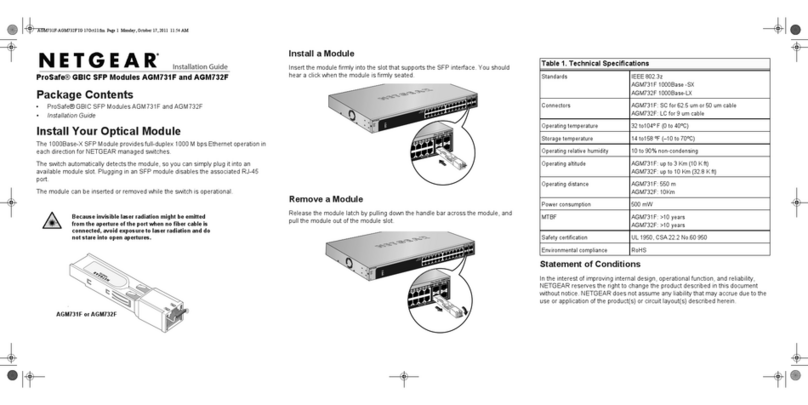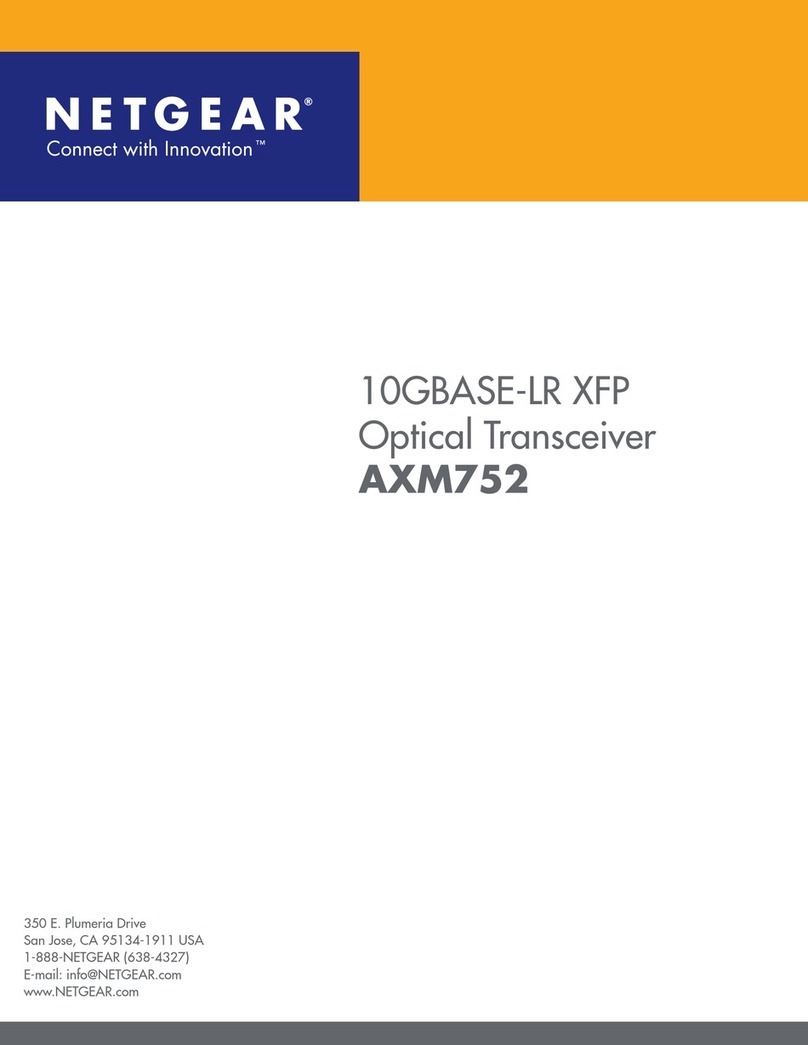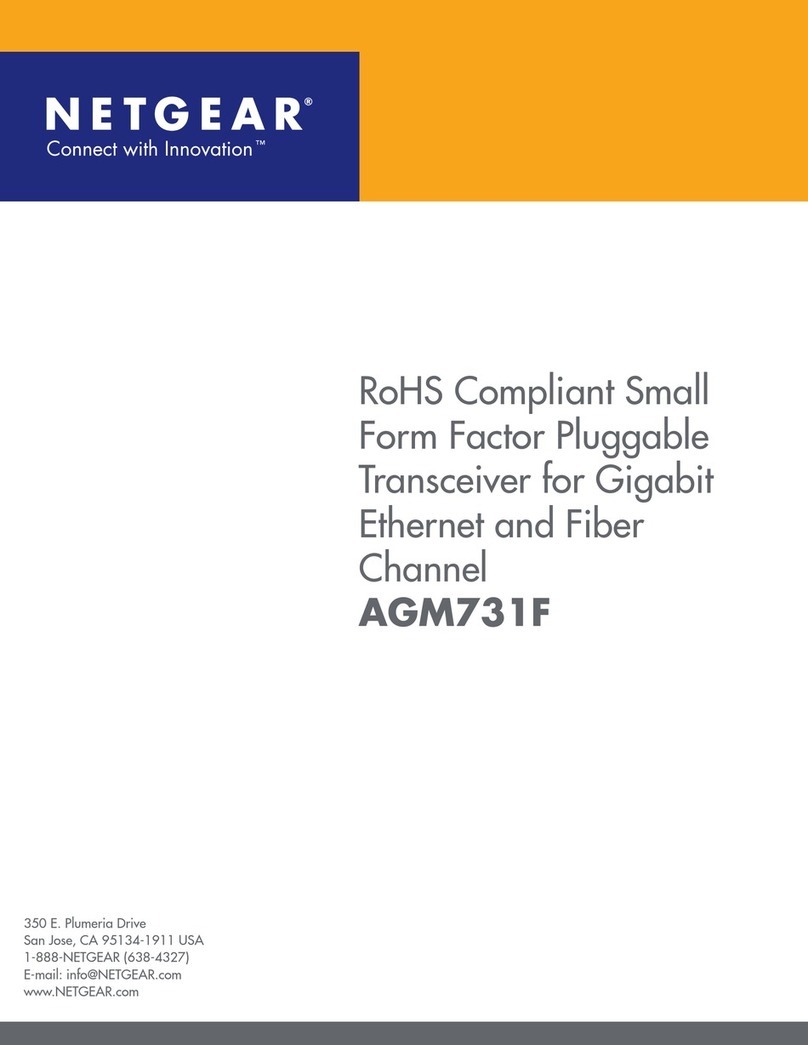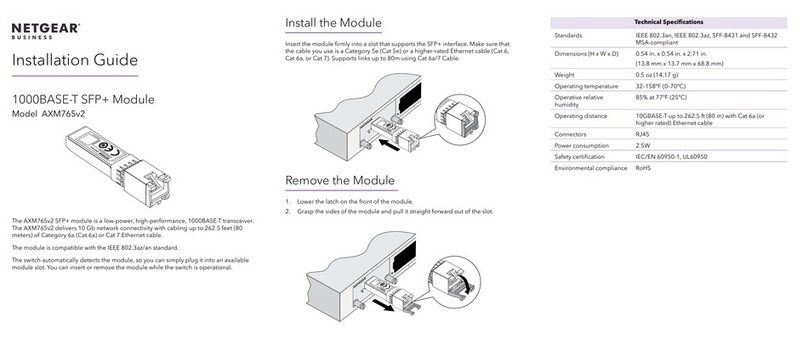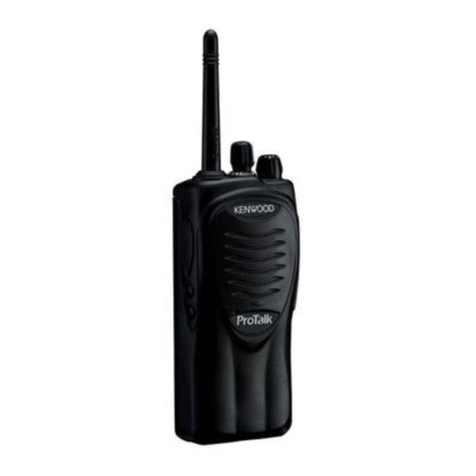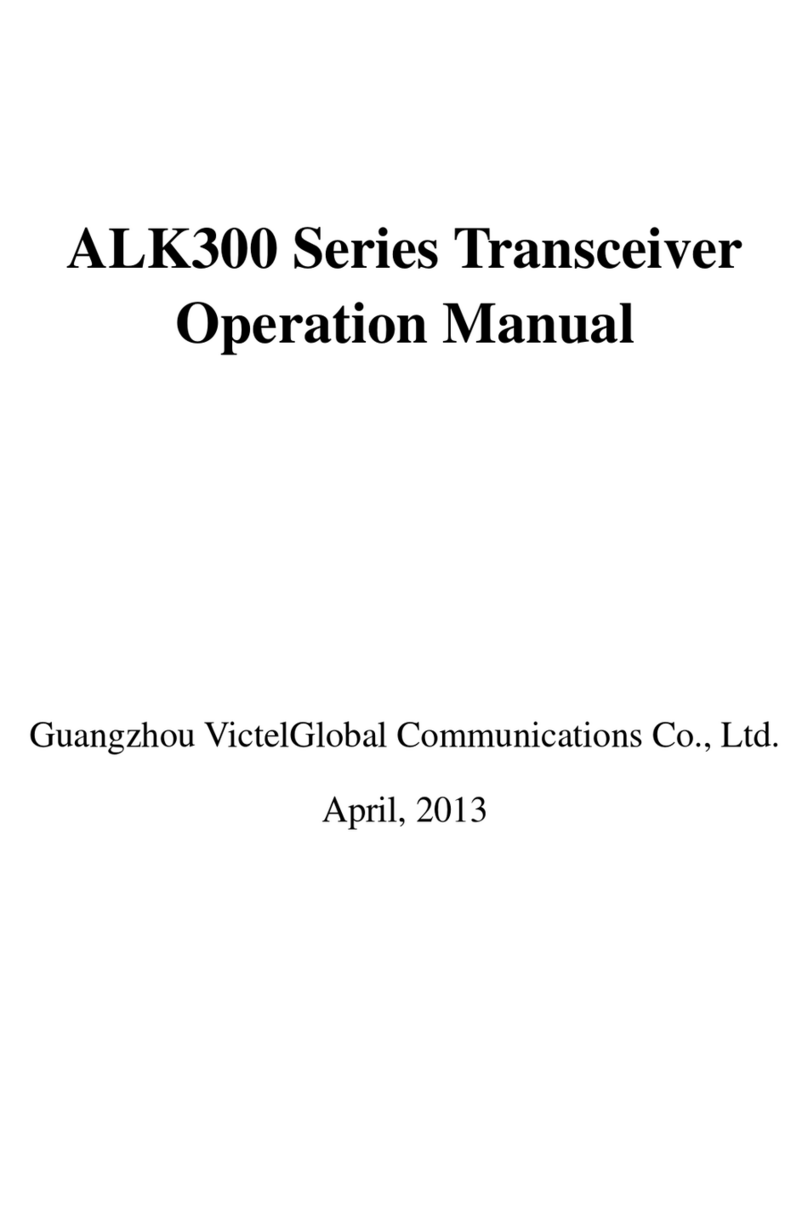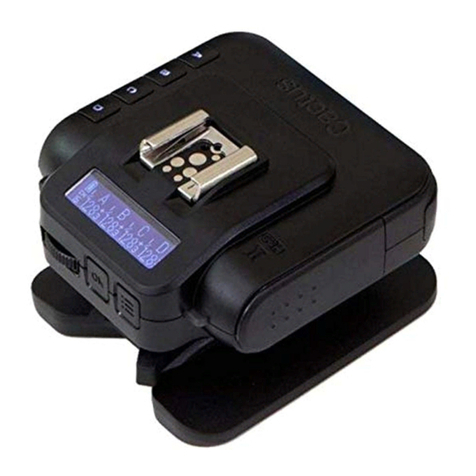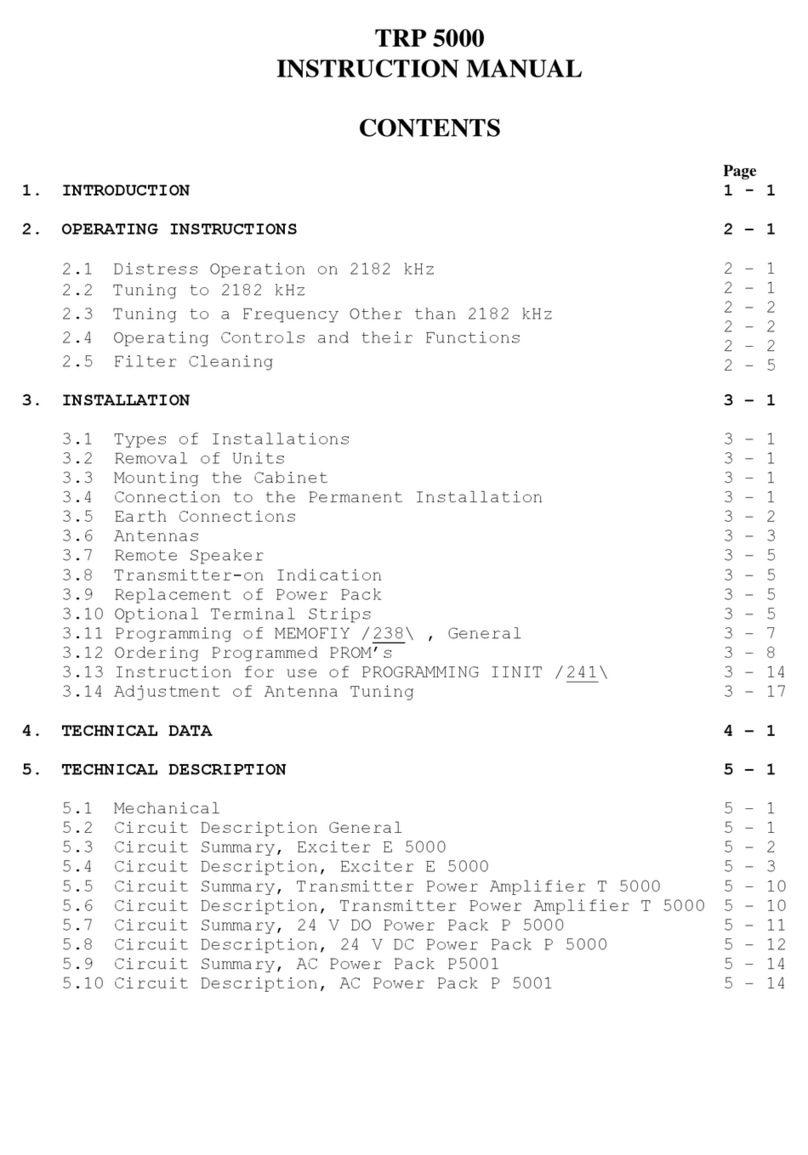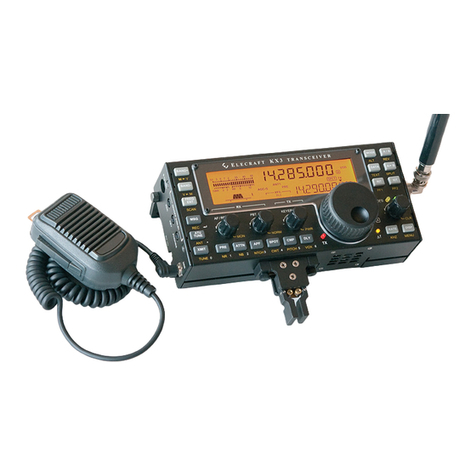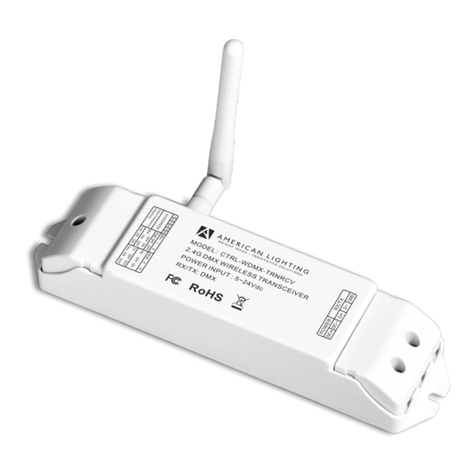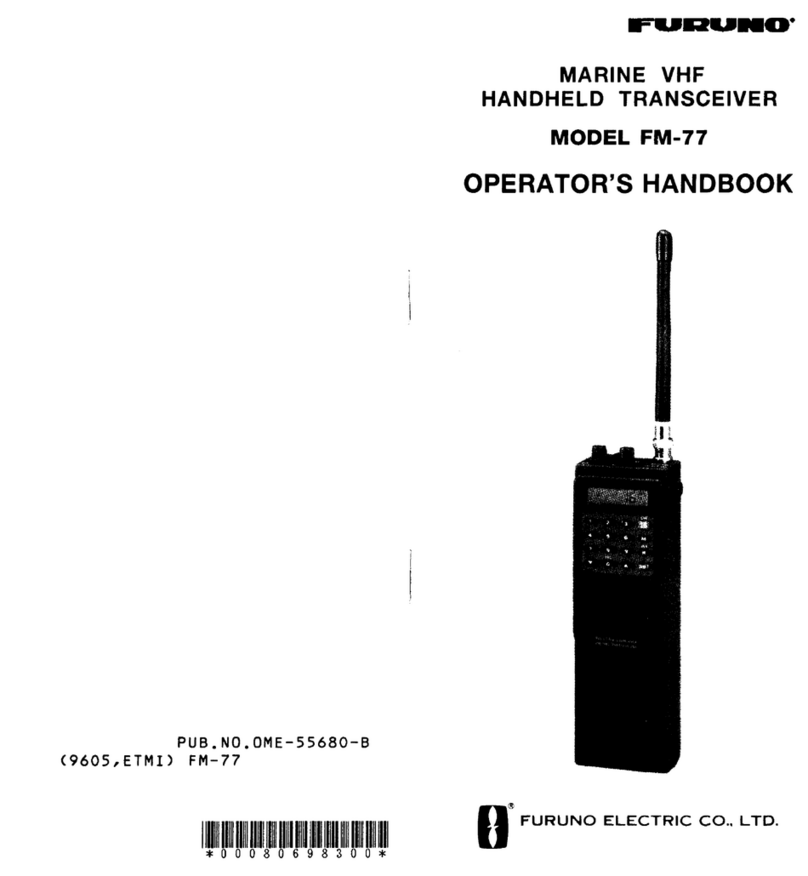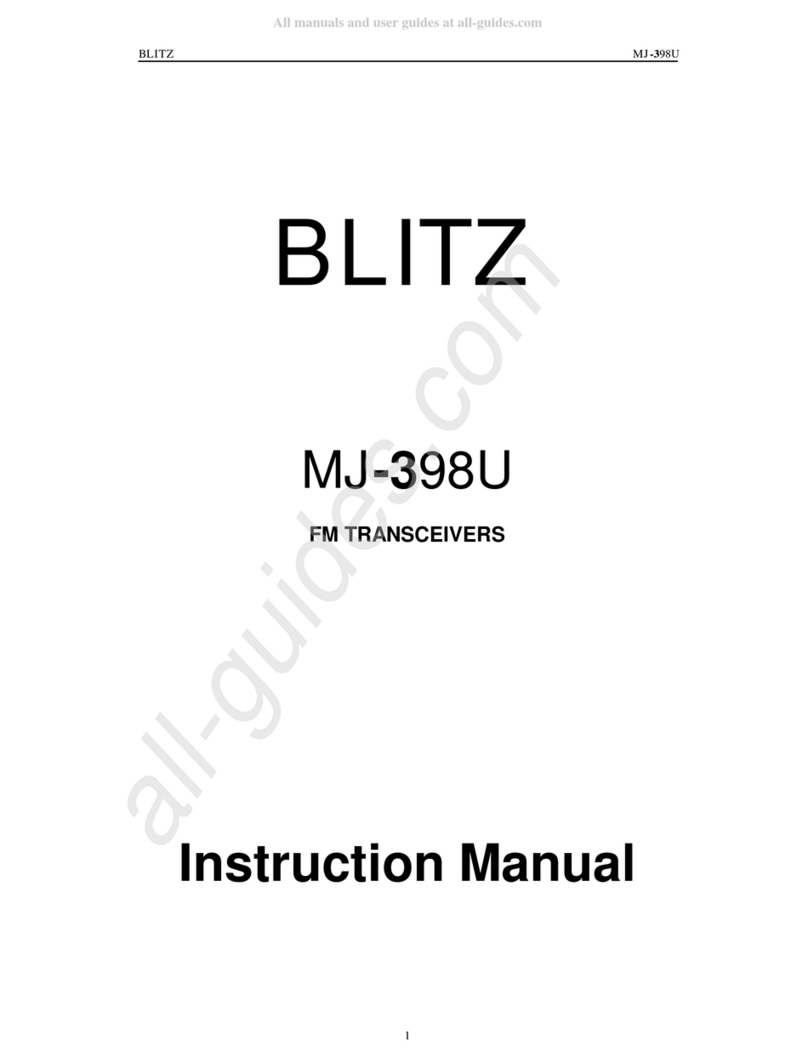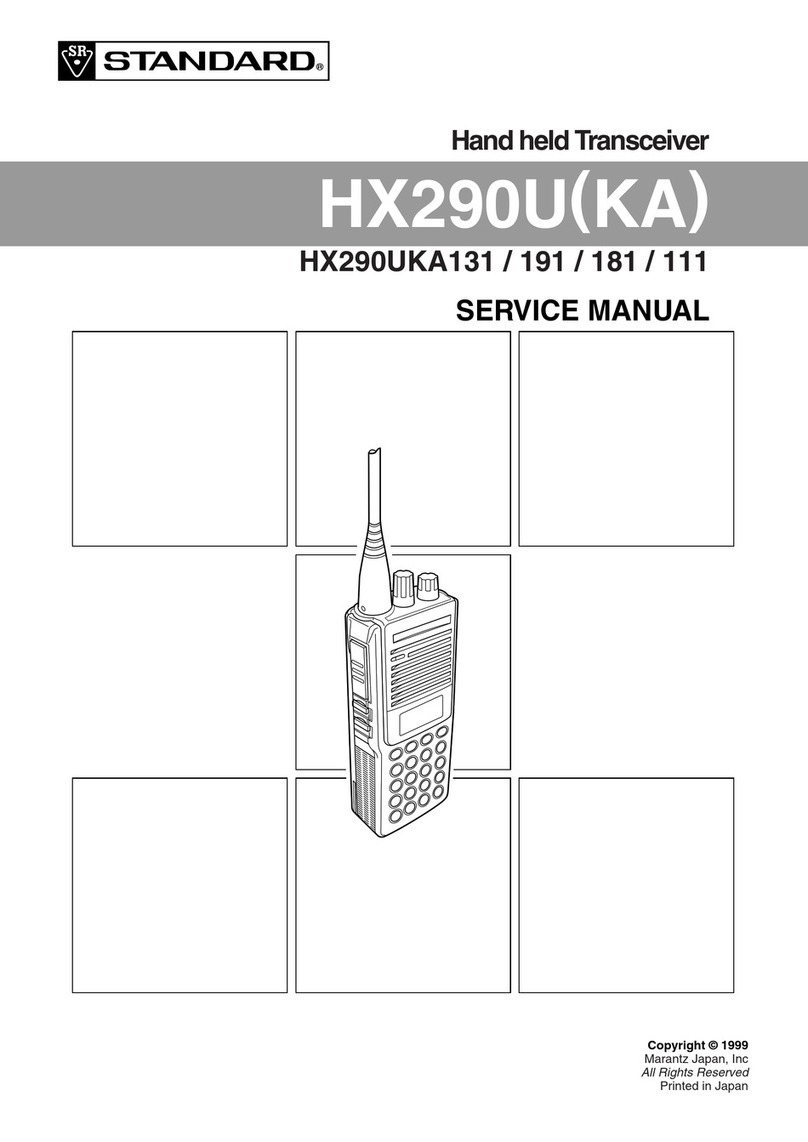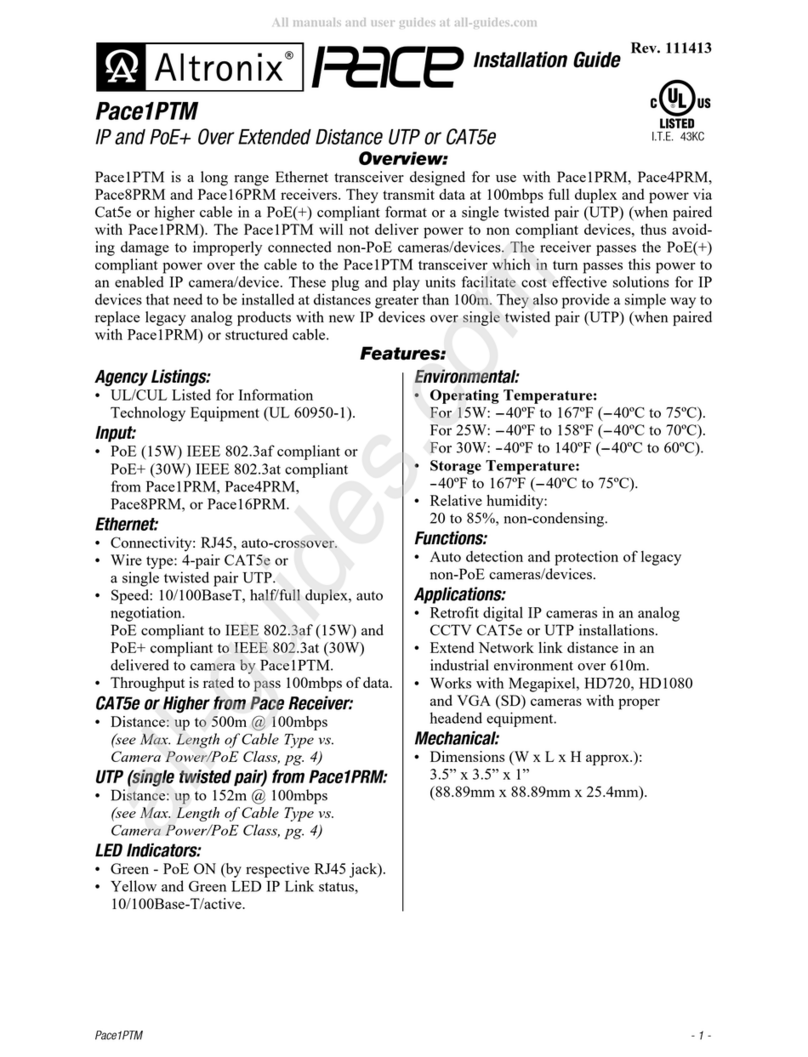Notes:
1) TX Fault is an open olle tor/drain output, whi h should be pulled up with a 4.7K – 10KΩ resistor on the host
board. Pull up voltage between 2.0V and V T, R+0.3V. When high, output indi ates a laser fault of some kind.
Low indi ates normal operation. In the low state, the output will be pulled to < 0.8V.
2) TX disable is an input that is used to shut down the transmitter opti al output. It is pulled up within the module
with a 4.7 – 10 K Ω resistor. Its states are:
Low (0 – 0.8V): Transmitter on
(>0.8, < 2.0V): Undefined
High (2.0 – 3.465V): Transmitter Disabled
Open: Transmitter Disabled
3) Mod-Def 0,1,2. These are the module definition pins. They should be pulled up with a 4.7K – 10KΩresistor on the
host board. The pull-up voltage shall be V T or V R (see Se tion IV for further details). Mod-Def 0 is grounded
by the module to indi ate that the module is present Mod-Def 1 is the lo k line of two wire serial interfa e for
serial ID Mod-Def 2 is the data line of two wire serial interfa e for serial ID
4) LOS (Loss of Signal) is an open olle tor/drain output, whi h should be pulled up with a 4.7K – 10KΩ resistor.
Pull up voltage between 2.0V and V T, R+0.3V. When high, this output indi ates the re eived opti al power is
below the worst- ase re eiver sensitivity (as defined by the standard in use). Low indi ates normal operation. In
the low state, the output will be pulled to < 0.8V.
5) VeeR and VeeT may be internally onne ted within the SFP module.
6) RD-/+: These are the differential re eiver outputs. They are AC oupled 100Ω differential lines whi h should be
terminated with 100Ω (differential) at the user SERDES. The AC oupling is done inside the module and is thus
not required on the host board. The voltage swing on these lines will be between 370 and 2000 mV differential
(185 – 1000 mV single ended) when properly terminated.
7) V R and V T are the re eiver and transmitter power supplies. They are defined as 3.3V ±5% at the SFP
onne tor pin. Maximum supply urrent is 300mA. Re ommended host board power supply filtering is shown
below. Indu tors with DC resistan e of less than 1 ohm should be used in order to maintain the required voltage
at the SFP input pin with 3.3V supply voltage. When the re ommended supply-filtering network is used, hot
plugging of the SFP trans eiver module will result in an inrush urrent of no more than 30mA greater than the
steady state value. V R and V T may be internally onne ted within the SFP trans eiver module.
8) TD-/+: These are the differential transmitter inputs. They are AC- oupled, differential lines with 100Ω
differential termination inside the module. The AC oupling is done inside the module and is thus not
required on the host board. The inputs will a ept differential swings of 500 – 2400 mV (250 – 1200
mV single-ended), though it is re ommended that values between 500 and 1200 mV differential (250 –
600 mV single-ended) be used for best EMI performan e.
